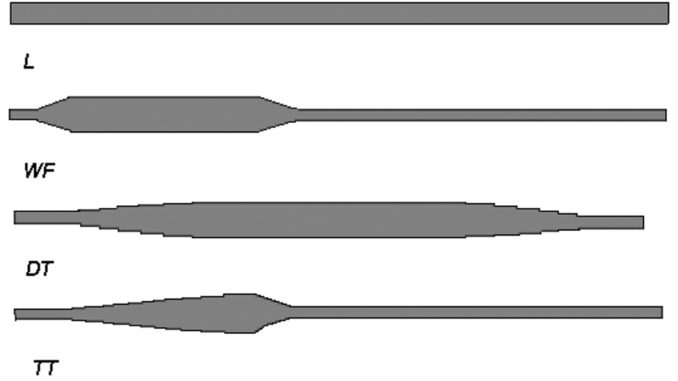
In the summertime, bass bite best up top on the edges of the day.
If you’re a duck, there are three places you want to avoid: 1) a Chinese restaurant, 2) the wrong church in Ponchatoula, and 3) my neighborhood pond when I’m out casting.
Last fall I received a sample 7-weight fly line from Scientific Anglers called the Mastery XXD. I placed it on one of my reels, then took the reel and a Sage VPS rod down to the pond for some serious testing.
Anticipating that the line might go some distance (it said “Distance Line” on the box), I peeled the entire 90 feet of fly line, plus some backing, off the reel. I then made a couple of false casts, using a double haul, and let the line go.
Much to my amazement, the line just kept going. Casting this much line is certainly not new to me. What was different was the ease with which I was able to shoot this line. Almost effortlessly, it seemed.
That the line traveled so far not only surprised me, it also came as a shock to a duck some 90 feet away who was enjoying just another lazy day on the pond. Little did he know a little adventure was to enter his life.
Somehow the leader wrapped around his leg. How, I don’t know. But as soon as he figured something was wrong, he took to the air. It gave a whole new meaning to “fly fishing.”
I’ve caught many things other than fish while fishing: snakes, turtles, a few gators, even a couple of owls and seagulls. Folks, nothing — not even those gators — gave me as hard a battle as that duck.
Even after I’d reeled him in, he continued to attack me with his bill. Not even a promise that I’d buy AFLAC insurance was enough to calm him down.
Finally, with the help of a couple of teenage boys, the duck was freed from the monofilament tangle.
The duck and I both came away with a better appreciation of special-taper line. In my case, it’s ability to enhance my casting. In the duck’s case, the need to move faster to avoid incoming objects.
Exactly what is a special-taper line? Let’s begin with line basics.
Unlike other types of fishing, in fly fishing you cast a line instead of a lure. The weight of the line propels the much lighter lure, or fly. The weight, as well as the density and taper, are critical to its intended use.
The American Fly Tackle Manufacturer’s Association has designations for line weight, density and taper. The weight number represents the weight in grains of the first 30 feet of line.
For example, an 8-weight line is heavier than 7-weight line, which is heavier than a 6-weight line and so on. You can also have two 7-weight lines, one floating and one sinking. The difference is that sinking line is more dense.
The taper of a fly line describes how the weight is distributed over the first 30 feet, or over its entire length. There are five designations for taper: level (L), double taper (DT), weight forward (WF), triangle taper (TT), and shooting head (SH).
A level line has a constant diameter over its entire length. A double taper is symetrical, with a fine tip at both ends increasing to a larger diameter belly in the middle.
When you pick up a box of fly line, the AFTMA designations guide you to what it is. For example, a DT-5-F line is a double taper, 5 weight, floating fly line. A WF-8-S line is a weight forward, 8 weight, sinking line.
Weight-forward tapers are the most used by far. They have a short tip section of small diameter, followed by an increasing front taper, a belly section of wide diameter, followed by a decreasing rear taper and then a long running line of small diameter.
By adjusting the lengths of the tip, tapers and belly, manufacturers of WF lines can create special variations that are ideal to certain situations.
The first special WF tapers were the bass bug taper, the bonefish taper and the steelhead taper.
The bass bug taper has a short, thick belly and a very short front tip to carry more energy closer to the leader, making it easier to propel and turnover large flies.
The bonefish taper has a longer tip section for a more delicate presentation.
The steelhead taper has a long belly that allows lots of line to be worked in false casts before the line is released.
In the last few years, manufacturers have created special tapers for situations targeting nearly every species that swims. You have tapers for redfish, speckled trout, panfish, trout, salmon, tarpon, even carp.
They even ran out of species to use, and thus the “XXD.” (If SciAnglers is willing, I can testify that the XXD line is certainly deserving of being renamed a “duck taper.”)
The problem is that all these special tapers are labeled as WF, and unless you do some research online, or talk to knowledgable staff at a fly shop, then you really have no idea what the dynamics of that line are.
Don’t be too concerned. Unless you’re a proficient caster, you’ll hardly notice any difference between special tapers of the same weight. So if you’re not in need of one, stick with the garden variety WF line. It’s probably cheaper.
When I read that the XXD had characteristics similar to a double taper line, it explained a lot. It just so happens that my favorite line for sight-casting to reds in the marsh is a double taper.
So would I buy an XXD special taper, or would I buy a double taper? Depends which one is more duck friendly.


